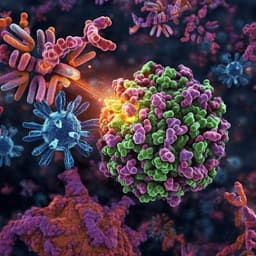
Medicine and Health
Cross-reactive memory T cells associate with protection against SARS-CoV-2 infection in COVID-19 contacts
R. Kundu, J. S. Narean, et al.
This groundbreaking study reveals how cross-reactive memory T cells could shield against SARS-CoV-2 infections. Analysis of immune responses from 52 COVID-19 household contacts uncovers a potential protective role of these T cells, especially those not targeting the spike protein. Discover insights from the research conducted by Rhia Kundu, Janakan Sam Narean, Lulu Wang, Joseph Fenn, Timesh Pillay, Nieves Derqui Fernandez, Emily Conibear, Aleksandra Koycheva, Megan Davies, Mica Tolosa-Wright, Seran Hakki, Robert Varro, Eimear McDermott, Sarah Hammett, Jessica Cutajar, Ryan S. Thwaites, Eleanor Parker, Carolina Rosadas, Myra McClure, Richard Tedder, Graham P. Taylor, Jake Dunning, and Ajit Lalvani.
Related Publications
Explore these studies to deepen your understanding of the subject.







